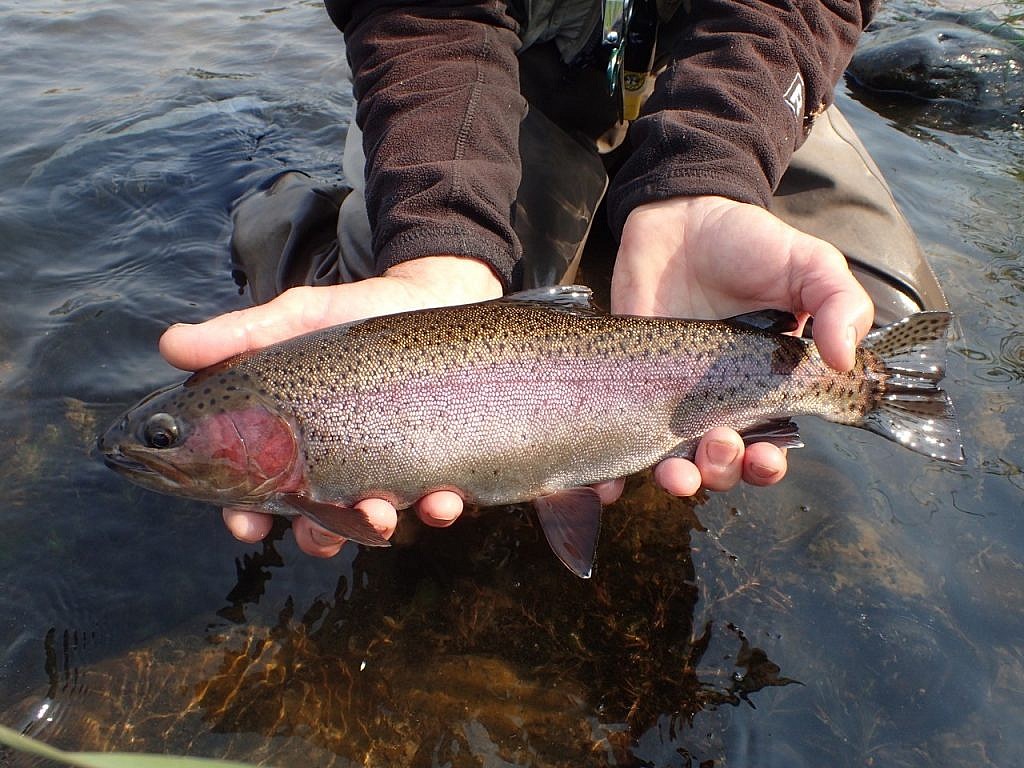
by Scott Sadil
Call him Jake. A recent initiate to the subtleties of trout fishing, he keeps texting my pal Joe Kelly to report another stellar winter session on the Deschutes.
Jake has learned to nymph; he thinks his success is a result of discovering the efficacy of the highly-touted Czech or Euro-style nymphing – when in fact he’s actually just learned how to fish the same way every Deschutes River trout angler comes to accept, grudgingly or not, as a way to catch redsides year-round, especially during spells when bugs don’t show and rising trout are nowhere to be found.
It’s not pretty but it works. Subtleties aside, all schools of nymphing embrace some version of the timeless mantra, “When in doubt, get the lead out.” Lead on your leader, or as part of your fly – or even in the guise of a bead made of some other species of metal – helps get your cast down to where fish are, holding or feeding, while at the same time allowing the angler to maintain contact with his or her presentation. Rid your weighted flies of any materials that impede their capacity to sink, keep your casts short and your line off the water – and now you can fish little jig-like flies deep on an all-but-taut leader.
And, for chrissake, get rid of your bobbers.
But I’m not here to instruct anyone how – or how not – to fish. Instead, I wonder these days if plucking fish from the river, regardless of the season, is really what we want to do.
Correct me if I’m wrong, but I think it was the advent of blue ribbon, catch-and-release, flyfishing-only streams that coincided with the beginnings of year-round seasons. I know two of our best writers, John Gierach and Ted Leeson, wrote long ago about their surprise and delight in discovering that in Colorado and Oregon, their respective new-found home states, trout season never ended. Both writers felt awfully pleased, and maybe a wee bit smug, having found their way to the wide-open West.
In Oregon and other Pacific drainage states, of course, exemptions from seasonal closures are only partial. Aware that many of us still can’t tell the difference between a steelhead smolt and an eight-inch rainbow, fisheries managers now keep many streams closed deep into spring, allowing juvenile sea-run fish time to escape during runoff. Special regs might require that you release your fish anyway, but do we really want to do anything to pester fragile stocks of wild fish?
Which brings me to my real question: In allowing year-round, catch-and-release trout fishing, have we neglected our fundamental role as stewards of our prey?
In my neck of the woods, for example, Deschutes River rainbows spawn in spring, part of an equation, as elegant as gravity, that finds these same fish coming off their redds just as the salmonfly nymphs begin migrating towards shore in herds reminiscent of bison crossing the plains.
Diminished from the rigors of spawning, Deschutes fish quickly regain their strength and vigor, gulping down big black bugs as fat around and as long as your pinkie. In a month, a sixteen-inch fish will have gained a pound, its belly plump as mine after twelve months of stay-at-home Covid isolation.
Unfortunately, a lot of big, dark trout get caught on the Deschutes during March and April, a time of year it seems best to leave these fish alone. I’m a writer, not a scientist, so my sense of things is inevitably skewed towards poetry, not facts, but it doesn’t take a lot of data to suggest that we’re better off not rattling the stable while the parents are engaged in their biggest chore of the year.
On the other hand, I remember saying once to a friend of mine, who is a scientist, that the fish we were catching seemed either to be getting ready to spawn, or they were in the process of recovering from spawning.
“That pretty much covers it,” pointed out said friend.
Anyway, Jake, if you’re listening, maybe think about giving the trout a break. Go hunt for some morel mushrooms. Shoot a turkey. Paint the bottom of a boat.
Or maybe take the time to tie up some dry flies.
______________________________________________________________________________
Gray’s Angling Editor Scott Sadil recalls his surprise on discovering proof, in a bucket, that southern California surfperch give birth live to their young.
